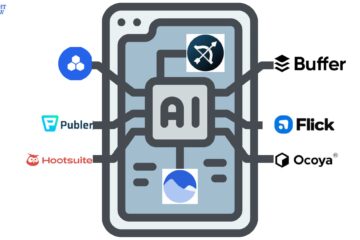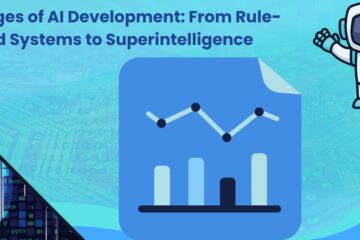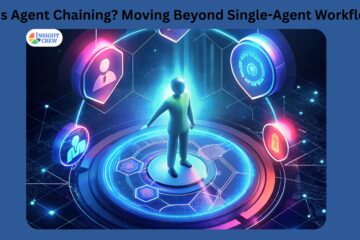Why, in your opinion, does ChatGPT immediately spring to mind when most people hear the term “artificial intelligence”? ChatGPT is different from MidJourney, Copilot, Gemini, and dozens of other models that are currently in use in the business world. The response is straightforward: The first company to commercialise AI instead of just making it a scholarly toy was OpenAI. They produced a phenomenon rather than merely a model.
In an era where speed is crucial, OpenAI has made it abundantly clear to business owners and entrepreneurs that establishing a brand and releasing a product shouldn’t be put off “sometime in the future,” but rather done yesterday. For this reason, ChatGPT has evolved into more of a symbol than a technology. A representation of AI’s accessibility, a reminder to “start here,” and evidence that new business tools are, in fact, emerging outside of labs and startup incubators.
This is where things start to get interesting. since ChatGPT is merely one tool. It is powerful, indeed. Indeed, it has altered the terrain. Yes, we recently received a fantastic version of ChatGPT 5. However, this model still has its own limitations, blind spots, and weaknesses. The true power of AI is found in the ecosystem, where various solutions are integrated to manage business processes, forecast demand, automate sales, and develop new business models, in addition to helping with text writing and making viral reels.
Why ChatGPT is now seen as a representation of the AI revolution
ChatGPT has evolved into a sort of artificial intelligence “Google.” It was the first to penetrate the sound barrier of mass consciousness, not because it is the best or the only one. Millions of people began using it “off the street”—without guidance, without a machine learning PhD, and without any apprehension about code. And OpenAI’s brilliant marketing strategy was this straightforward “come in and try it” approach.
Let’s face it, nobody talks about intricate climate prediction models in the kitchen. With all of its visual “wows,” MidJourney is still categorised as a designer or creator. However, ChatGPT is now a common topic of discussion. It has become a meme, a universal response to any query, and even a joke that goes something like, “Can’t you ask GPT?” That’s true popularity. However, it’s crucial to avoid confusion in this situation. AI is more than just ChatGPT. It’s only one model: helpful but constrained; motivating but prone to hallucinations and distortions. It boldly conflates facts and fabricates sources. To put it mildly, an entrepreneur or business is underestimating the scale if they believe that AI equals ChatGPT.
The primary takeaway is different: ChatGPT has gained notoriety as a symbol of the importance of speed and ease of use. Others were still debating the product’s risks and regulations when OpenAI launched it. “AI is already here, and either you start using it or you’ll be playing catch-up in a couple of years,” they told the market. The first lesson in business is that speed is more crucial than perfectionism.
Here, it’s important to keep in mind Google’s error. I apologise, Google. The company, which for decades had been known as the “search king” and had established the benchmarks for AI research, launched Bard (later Gemini) in a way that made it appear as though it had been ill-prepared: wrong answers, a demonstration gone wrong, and a decline in shares worth billions of dollars. It turned into a public demonstration of how even industry titans fail when they fail to properly launch a product. By the way, this is not the first time Google has fallen short. Recall Glass or their incessant messenger experiments, ranging from Allo to Hangouts. Although the technology existed, it was never commercially available. That is the primary distinction between “market leadership” and “technological superiority.” For this reason, ChatGPT is a signal as well as a tool. An indication that the days of “waiting until the technology matures” are over. Today, the winner is not the one with the best model, but rather the one who can incorporate it into millions of people’s daily lives the quickest.
Beyond ChatGPT: where artificial intelligence is genuinely changing business
Businesses that once concluded, “We don’t need the internet, we have the telephone,” are repeating the same error if we reduce artificial intelligence to ChatGPT. Although ChatGPT is practical and has come to represent a new era, obsessing over just one tool can be dangerous. When AI is integrated into every aspect of business, from marketing to analytics and strategic decision-making, true transformation takes place.
AI is a whole ecosystem that automates repetitive tasks, strengthens teams, and generates competitive advantages rather than a single model. Furthermore, we’re not merely discussing start-ups. Big businesses, banks, retailers, and educational institutions are already reorganising their operations to make “working without AI” as ridiculous as doing accounting by hand on paper today. Imagine a business that integrates an AI systemically, rather than just in certain areas, to get a sense of the scope. A full-fledged operational framework, not an intern tasked with creating post captions: algorithms gather information, forecast trends, produce original content, buy media, and create reports more quickly than your CFO can open Excel.
These organisations stop being “contractors” and transform into hybrid AI businesses that operate according to algorithms rather than deadlines.
And in this case, I can speak both as a practitioner and as an observer. My initial encounter with a Ukrainian marketing agency was more of an anti-case study; the company proved to be challenging and slow in the absence of automation. I learnt from this lesson that you cannot survive without the proper infrastructure. For this reason, when I speak of the “marketing agency of the future,” I am referring to what I am creating now rather than a fantasy.
Together, let’s envision the marketing firm of the future. WeWork is not a dull workplace with coffee from a capsule machine and constant layout changes, but rather a business where AI is integrated into every procedure. In this case, artificial intelligence (AI) is a full-fledged “business engine” that gathers data, forecasts trends, produces original ideas, and purchases media. The term “advertising contractor” is no longer applicable to such an organisation. It is a hybrid AI company that operates at the speed of algorithms rather than human hands on deadlines. And in a few years, these kinds of structures will determine how companies develop their communications and allocate their advertising budgets in a world where speed is more crucial than accuracy.
Without AI, starting a company in 2025 would be like launching an airline without aircraft. It’s theoretically feasible, but you won’t make much progress. Artificial intelligence is no longer an “add-on,” but rather the fundamental framework upon which a business is based, influencing everything from the distribution of resources to the formulation of strategic plans. Furthermore, the agency of the future begins with AI tools that cover essential business functions even before the first employee is hired, whereas a start-up used to start with an Excel spreadsheet, a few designers, and endless copywriter briefs.
For this reason, I deliberately took a different route when I established Global Tech & AI Publishing House in London. AI was incorporated into the fundamental framework right away, encompassing everything from audience engagement to analytics and content. This made it possible for us to develop a system more quickly and adaptively than was previously feasible. For me, this is not theory but practice: I am currently constructing the agency of the future.
How to eliminate Excel before your initial investor meeting: internal procedures
Any business starts with internal chaos. The team is overwhelmed with work, files, and endless approvals before they can develop a media strategy or come up with a slogan for a client. Companies live in endless “final versions” of presentations, agencies live in Excel, and startups live in Slack. Before the client even sees the first outcome, internal organisation time can easily consume up to 30% of a project’s budget.
This is fixed right away in the agency of the future. As the company’s only brain, we introduce Notion AI. There is only one knowledge base, which includes workflows and contract templates, rather than dozens of documents dispersed throughout the place. AI helps staff members locate the information they require in a matter of seconds, automatically organises notes, and generates checklists. For regular automation, we link Make.com or Zapier AI. From writing a brief to reminding someone to pay a bill, any repetitive task automatically goes through the chain.
The outcome:
Instead of chaos, the agency begins with a well-organised system. No files are lost, no deadlines are missed, and no needless approvals are made. Internal procedures become a source of growth rather than a barrier, the team functions as a cohesive unit, and clients receive prompt responses. And at Global Tech & AI Publishing House, this is precisely how I construct procedures, so it’s not just theory.
An approach that relies on data rather than gut feeling: forecasting and analytics
This is no longer theory in my practice; AI analytics is actually altering the way we make decisions. The majority of agencies continue to develop their strategies “by eye.” Forecasts are based on the one magic word, “experience,” and analytics is reduced to 100 PowerPoint slides that no one ever reads. The issue is that “we did it this way last year and everything was fine” is frequently the result of experience. This reasoning is a one-way ticket to failure in a time when markets can shift in a matter of weeks.
Analytics is not a distinct “department of people with dark circles under their eyes” in the agency of the future; rather, it is an AI system that operates around-the-clock and processes terabytes of data more quickly than an analyst can create the first Excel graph.
We connect Power BI Copilot, which not only visualises data but also makes recommendations about which segments are expanding, which channels are no longer functioning, and why demand is changing. Real-time business recommendations, not graphs for the sake of graphs. We use Tableau AI, which creates predictive models rather than sifting through reports by hand. For instance, “which product will take off by the next quarter” or “the likelihood that TikTok campaigns will cease to function in three months.” For competitive analysis, we include Crayon and SimilarWeb AI. AI instantly reveals which channels competitors are investing in, which keywords they are testing, and how their strategy is evolving, eliminating the need to speculate about what they are doing.
As a result, the strategy is based on predictions that can be supported by data rather than yelling during conference calls. The client receives a working model of the market “here and now,” rather than a fancy presentation in a month. The agency stops being a “creative service” and turns into a strategic partner that anticipates market trends and keeps the client ahead of the curve.
Creativity and content are where brainstorming stops and AI creativity starts.
A wall covered in yellow sticky notes, countless brainstorming sessions, and debates over which slogan will “resonate with the audience” are all examples of traditional agency creativity. Most of the time, the idea with the loudest presentation wins, not the best one. This ritual is relegated to the museum in my agency of the future.
For text, we use Copy.ai and Jasper, which generate dozens of possibilities for email campaigns, descriptions, and slogans in a matter of minutes. Instead of focusing on the word “perfect,” copywriters now work with a variety of ideas and modify them to fit the intended brand tone. We have a vast collection of images. While Runway Gen-2 creates videos for campaigns, MidJourney transforms a brief into atmospheric images, and Leonardo AI goes one step further by enabling you to create entire settings and concepts for advertising campaigns, including stylised worlds and pre-made branding elements. Once requiring weeks and tens of thousands of dollars, this level of detail can now be obtained in a day for the cost of a cup of coffee.
As a result, the campaign is no longer slowed down by a lack of creativity. When the client is presented with dozens of ideas at once, the agency team focuses on “what will actually work” rather than “what to come up with.” Because data and AI don’t have a favourite slogan, they have metrics, which means that speed increases, quality increases, and subjective disputes decrease.


